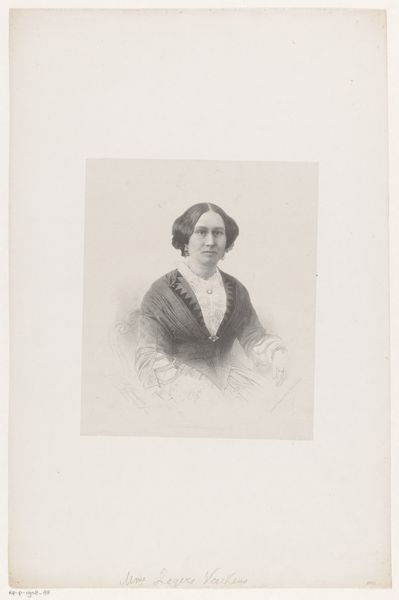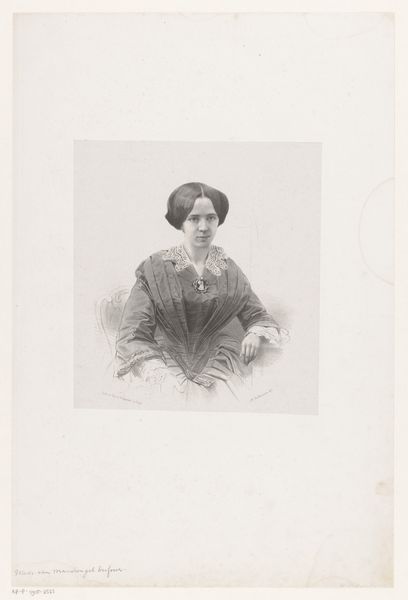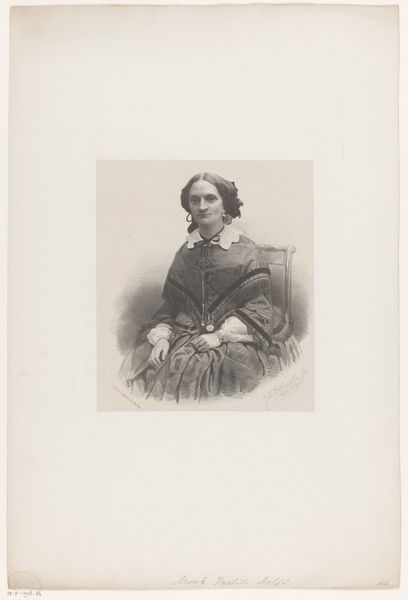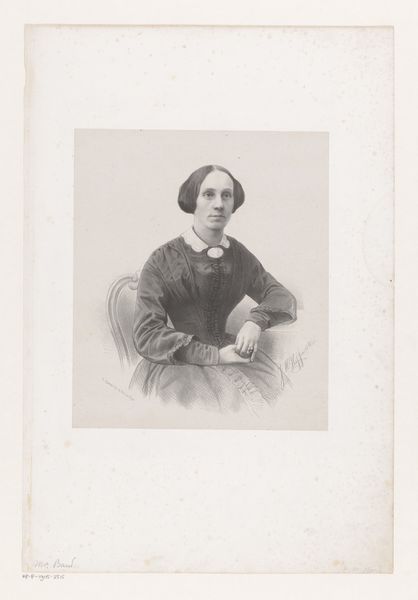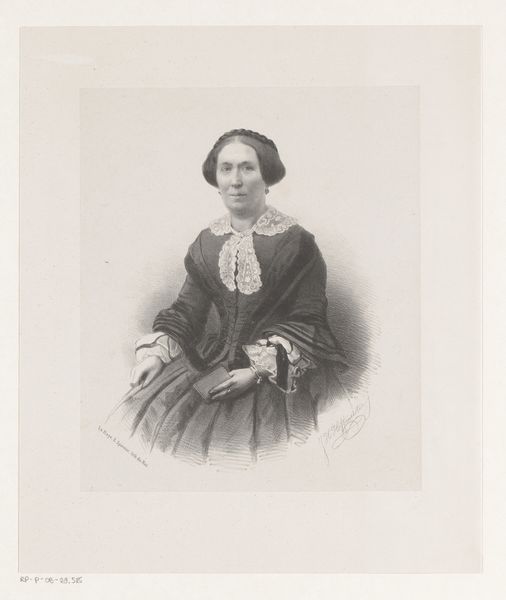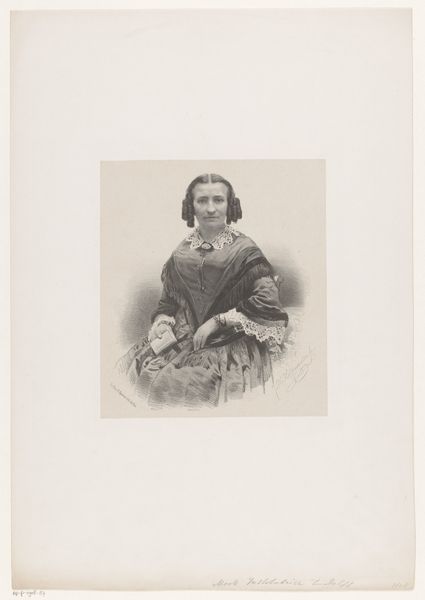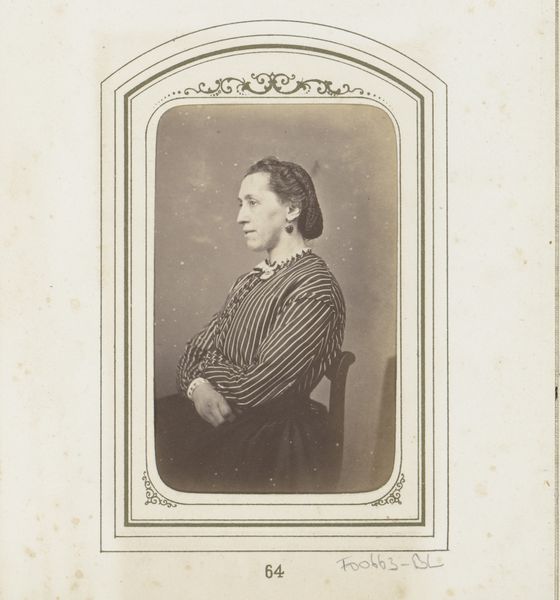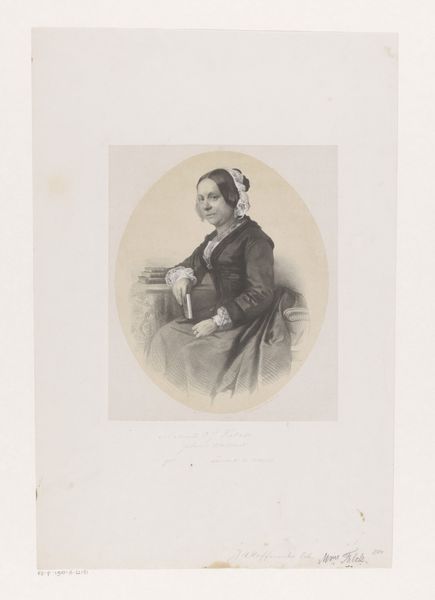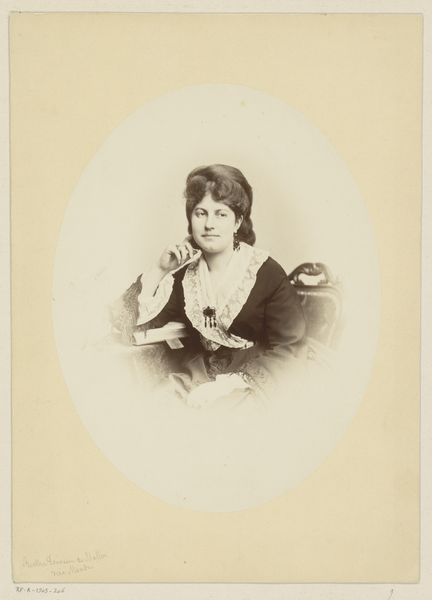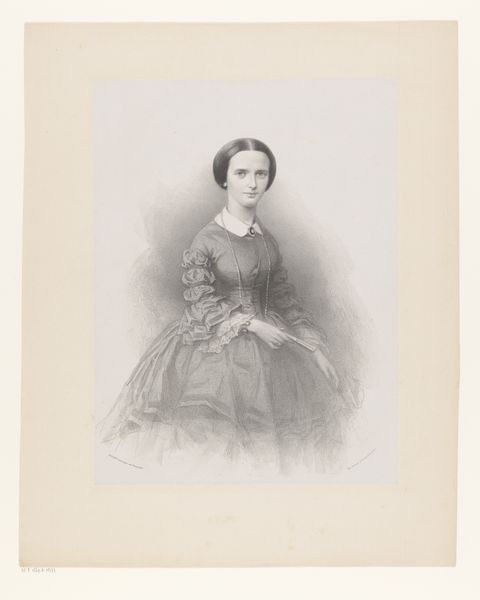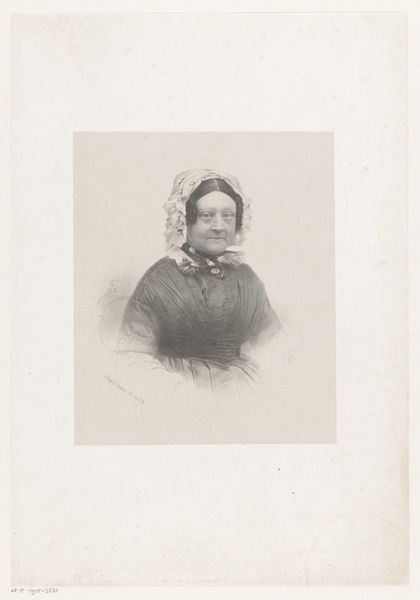
print, graphite, engraving
#
portrait
# print
#
pencil drawing
#
graphite
#
graphite
#
engraving
Dimensions: height 540 mm, width 405 mm
Copyright: Rijks Museum: Open Domain
Curator: This is a print entitled "Portret van mevrouw Bakker" which translates to "Portrait of Mrs. Bakker." The piece, created by Johan Hendrik Hoffmeister, likely dates sometime between 1851 and 1883 and employs graphite and engraving techniques. Editor: My immediate sense is one of dignified melancholy. There’s something very formal and restrained about her posture and the subdued tones, yet a subtle sadness lingers in her eyes. It's the classic visual language of grief we've grown accustomed to. Curator: Absolutely. In terms of symbolic imagery, we can interpret her formal attire – the dark, elaborate dress with its delicate lace – as indicative of both her social standing and a possible period of mourning, which were carefully signified with color. Dark colors and rich textures of that period, became almost iconic for projecting a message of personal status and sobriety of mood. Editor: Right, and considering this work likely originated during the later part of the 19th century, it coincides with evolving roles and expectations for women. These portraits could be commissioned as objects of social performativity and tools for crafting specific narratives, in what feels to me like visual power statements. The tight bodice, the hand lightly resting – almost possessing - the white cloth all seem staged, controlled. Curator: Very insightful! That reading dovetails beautifully with another interpretation focused on inner resilience. Her gaze seems incredibly direct, refusing to shy away from the viewer. It is more than just decorum; the direct gaze projects self-assuredness in the face of the period's inherent socio-political constraints and what appears to be great personal distress. The meticulous detail—the curls framing her face, the intricate patterns in her clothing—all indicate considerable intention. The very precision of line communicates power and lasting effect. Editor: The choice of print and engraving adds a layer as well. It feels inherently tied to distribution and accessibility. Was Hoffmeister aiming for a wider circulation, beyond the sphere of the sitter? And to what end? Curator: Precisely. Reproduction opens fascinating avenues for dialogue about societal roles, accessibility to portraiture, and, of course, Hoffmeister's individual statement and reputation at that time. I'm intrigued. Editor: As am I. It reveals just how much visual stories, often ignored, we can unpack from even a single portrait, reminding us that all portraiture is socially freighted, never an island of observation.
Comments
No comments
Be the first to comment and join the conversation on the ultimate creative platform.
